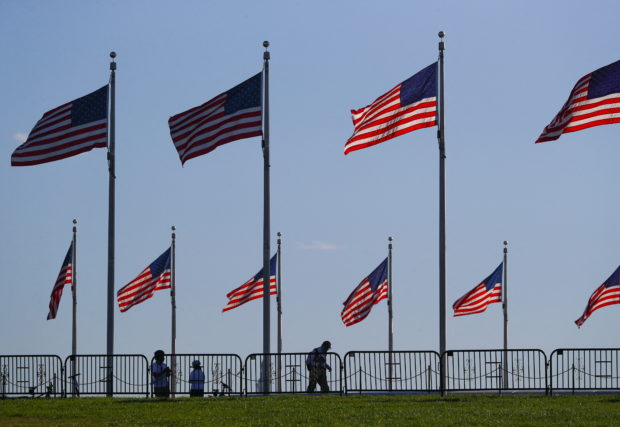US weapons exports decreased 21% to $138.2 billion in fiscal 2021

FILE PHOTO: People walk beneath U.S. flags surrounding the Washington monument on the National mall, near the White House in Washington, U.S., November 10, 2020. REUTERS/Tom Brenner
WASHINGTON — Sales of U.S. military equipment to foreign governments fell 21% to $138 billion in the latest fiscal year, the U.S. State Department said Wednesday, as the Biden administration shifts away from some of the more aggressive arms sales practices under former President Donald Trump.
The U.S. State Department disclosed military sales figures for the 2021 fiscal year, which ended on September 30. Sales included $3.5 billion worth of AH-64E Apache attack helicopters to Australia and $3.4 billion worth of CH-53K helicopters to Israel.
Sales of U.S. military equipment in the prior fiscal year had totaled $175 billion.
President Joe Biden’s administration shifted away from selling offensive weapons to Saudi Arabia, due to civilian casualties in Yemen and intends to announce a new weapons export policy that emphasizes human rights when evaluating an arms sale.
The 2021 dip comes after high one-time sales of fighter jets and guided missiles in the final year of the Trump administration. Major fiscal 2020 deals included Japan’s purchase of 63 F-35 fighter jets from Lockheed Martin accounting for as much as $23 billion of that year’s total.
Article continues after this advertisementThere are two major ways foreign governments purchase arms from U.S. companies: direct commercial sales negotiated between a government and a company; and foreign military sales in which a foreign government typically contacts a Defense Department official at the U.S. embassy in its capital. Both require U.S. government approval.
Article continues after this advertisementThe direct military sales by U.S. companies fell 17% to $103 billion in fiscal 2021 from $124 billion in fiscal 2020, while sales arranged through the U.S. government fell 31% to $34.8 billion in 2020 from $50.8 billion the prior year, the State Department said.
In 2018 the Trump administration rolled out a “Buy American” program that relaxed restrictions on military sales while encouraging U.S. officials to take a bigger role in increasing business overseas for the U.S. weapons industry.